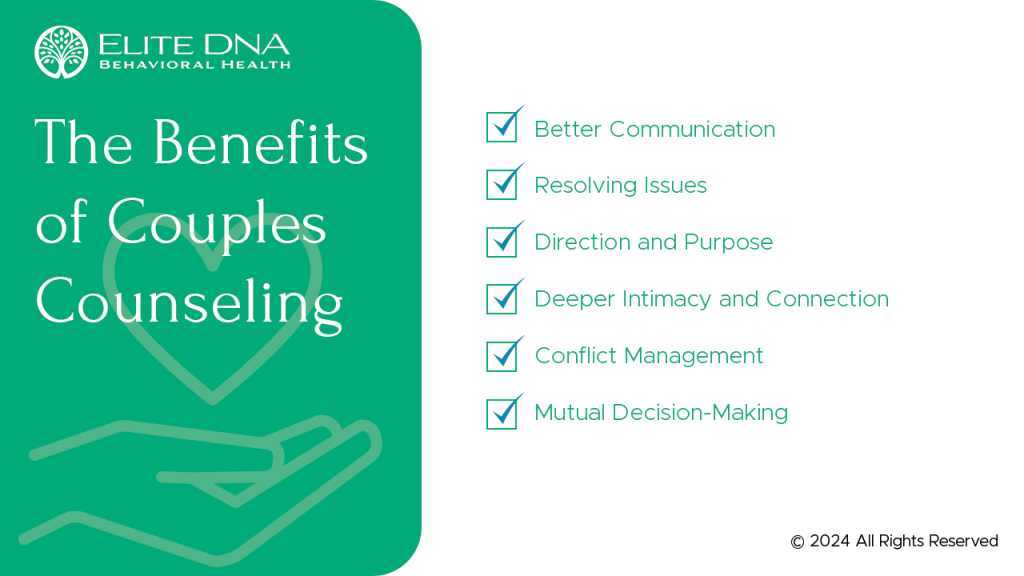Aim Point Counseling Fundamentals Explained
Aim Point Counseling Fundamentals Explained
Blog Article
The Definitive Guide for Aim Point Counseling
Table of ContentsTop Guidelines Of Aim Point CounselingSome Known Facts About Aim Point Counseling.Aim Point Counseling Can Be Fun For Everyone6 Easy Facts About Aim Point Counseling DescribedThe Ultimate Guide To Aim Point CounselingAim Point Counseling - The Facts
The longitudinal layout entails a pre-treatment survey and 2 follow-up surveys at 3- and 12-months post-intervention. The study is established in 8 Relationships Australia Victoria centres, throughout urban, external suburbs, and regional/rural websites. Relationships Australia, a non-government organisation, is the biggest company of pair counselling and partnership services in Australia.:max_bytes(150000):strip_icc()/GettyImages-1255910541-ed30dfdbba694f12959bdd58335b334a.jpg)
These high rates of relationship break down have been constantly linked with adverse wellness effects for both grownups and youngsters adhering to divorce/separation.
Indicators on Aim Point Counseling You Should Know
Longitudinal studies also recommend that kids of separation have a higher occurrence of emotional conditions, drug and alcohol usage, and dangerous sex-related behaviour [7] The impacts of separation and separation can be detrimental, study indicates that high partnership disharmony in undamaged couples is also most likely to have negative results.
Moreover, aspects that affect the results of these solutions require complete investigation. Research study to day has actually recognized both couple and private variables that might add to connection dissonance. These consist of relationship contentment and dedication at the pair level, and clinical depression at the private degree. Robust research study to examine relationship-enhancing treatments in the area are scarce.
Aim Point Counseling Fundamentals Explained
Relationship fulfillment has been the most typical result variable identified in more than 200 analyses of pair therapy [11,12] Research studies have found significant renovations in partnership contentment from pre- to post-treatment [13,14] and throughout one to two years following coaching [15] In these studies, relationship satisfaction was most regularly examined using the Dyadic Change Scale (DAS) [16] While many research studies show improvements in connection satisfaction complying with pair counselling, they are limited by the examples and measures utilized, mostly short-term follow-up time frames, and analyses that do not account for the dyadic nature of couple data., is one more commonly examined partnership outcome.
To summarise, research suggests that couple-specific variables in addition to specific variables may forecast the results of pair counselling and connection services. The causal direction of these connections, nevertheless, is less clear. These observations are essential, because, to justify and direct the application of relationship solutions such as pair coaching, empirical evidence has to discover both the results of connection services and the factors that forecast effective treatment.
, at the very least in some European countries.

We presently recognize little about the profiles of couples that look for out partnership education compared with those who seek relationship therapy, or the results of these programs. Unscientific proof recommends that there might be significant distress amongst at the very least some pairs seeking relationship education.
Getting The Aim Point Counseling To Work
Comments entails individuals completing sets of questions about their relationship (e.g. steps of interpersonal troubles), and obtaining info on what their scores indicate. Cognitive-behavioural strategies advertise altering cognitions to help with favorable partnerships. These may include advertising practical attributions/expectations around negative companion behavior [46] In skills training, couples attend lectures or discussions on relationship skills, and practise these during facilitator-led activities [ 45]
These meta-analyses highlight restrictions in the current literature on relationship education. This sample profile might not represent clients who generally offer for connection education and learning.
Excitement About Aim Point Counseling

Extremely little research has analyzed the comparative benefits of pair counselling and partnership education and learning programs. As clients are most likely to self-select into these solution types, it is not clear whether particular connection distress accounts present to every solution kind, or without a doubt whether there is a communication between providing account, service type and outcome.
(https://a1mpoint.wordpress.com/2025/03/07/aim-point-counseling/)
Therefore, we have included a 12-month follow-up to evaluate longer-term trends and impacts. The research study uses a number of standardized end result actions since some prior examinations have been criticised for their absence of standard assessment [50] Finally, using statistical analyses that think freedom of data, such as t-tests, or ANOVAs, has been prevalent in previous researches [ 44,49]
We propose to make use of multi-level statistical modelling procedures that control for the inter-dependence of couple data to analyze more info here any type of treatment impacts. The particular goals of the ECC research are to: 1. Map accounts of customers seeking community agency-based pair coaching vs. partnership enhancement programs in terms of socio-demographic and connection signs (such as connection satisfaction, connection commitment, social issues, and factors for participating in), in addition to health (such as clinical depression, general well-being) and health and wellness service use (eg.
Figure out whether couple therapy and partnership education solutions boost three- and twelve-month end results for partnership contentment, commitment, and clinical depression, utilizing analytical analyses proper to pair information. christian counseling. Establish the relative payments of client aspects (specific and pair) and therapy/education elements to results at 3- and 12-months, and to sustainability of end results over time.
See This Report about Aim Point Counseling
Multi-level modelling to figure out pre-post differences, controlling for dyadic (couple) level. To add to the literary works analyzing the efficiency of community-based couple counselling. The outcomes will certainly aid medical decision-making in community-based relationship solution settings, and professional training. 3. To figure out the family member contributions of client/couple and therapy variables to outcomes at 3- and 12-months, and to sustainability of outcomes with time.
Report this page